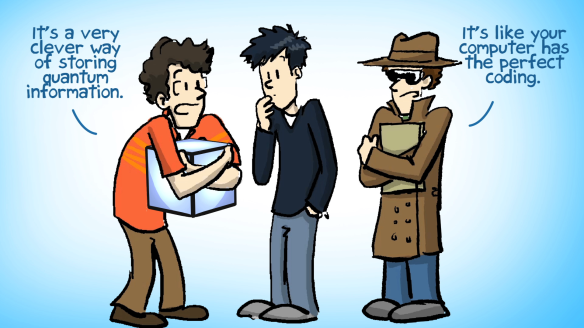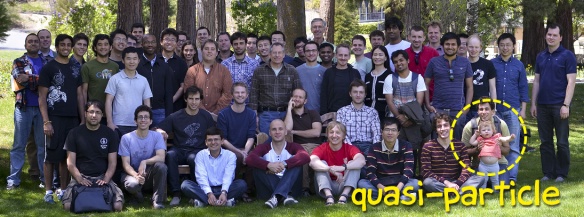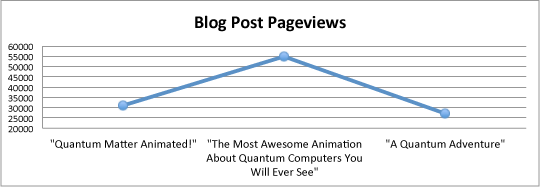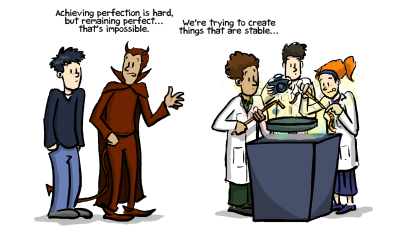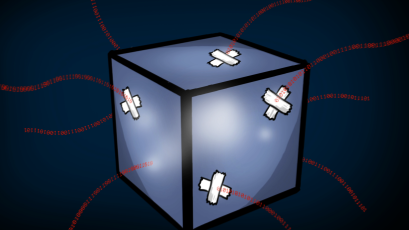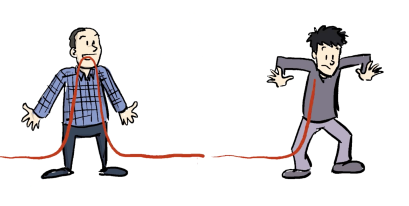by Jorge Cham.
Ok, this is where things get weird. If quantum computers, femtometer motions or laser alligators weren’t enough, let’s throw in fractionalized electrons, topological surfaces and strings that go to the end of time.
To be honest, the idea that an electron can’t be split hadn’t even occurred to me before my conversation with Gil and Jason. And yet, this goes back to the very essence of the word Quantum: there’s a minimum size to everything. For electrical charge, that minimum is the electron.
Or so we thought! According to my friend, Wikipedia, the discovery of the Fractional Quantum Hall Effect in the 1980’s showed that you can form quasi-particles (or “bubbles” as Gil and Jason explain in the video) that carry 1/3 of an electron charge under certain 2D conditions. The 1998 Nobel Prize was awarded for this discovery, although, ironically, they had to split it in three (two for the experimentalists who found it and one for the theorist that explained it).
Typically, I leave a lot out of the final video. The conversation I recorded with Jason and Gil lasted several hours and yet the final product is only five minutes long. One aspect that we talked a lot about but that I did not include in the video above (you watched it already, right?), is the idea of “More is Different”. Here is audio of Jason explaining what it is using birds as an example:
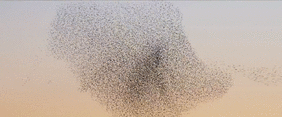
source: we-are-star-stuff.tumblr.com. Click below to hear the audio.
This is the idea of “emergent properties”: that when you combine lots of something together, you don’t just get what’s inside, you get something new. Something different. I think this is a good analogy for IQIM itself, or any such grouping of researchers under one banner. Sure, technically, each person can do great research on their own, but mix them together in one soup and more interesting things can happen that you didn’t expect.
The IQIM Family:
Well, I hope you’ve been enjoying these videos and blog entries. I was going to title this blog post, “The Mysteries Are Just Piling Up” or “Quantum Knots”, but then I looked at the pageviews for all the other blog posts I made:
I guess the title of your blog post matters. So, if this video didn’t shock you, I hope at least it 1/3 shocked you.
Watch the fourth installment of this series:
Jorge Cham is the creator of Piled Higher and Deeper (www.phdcomics.com).
CREDITS:
Featuring: Gil Refael and Jason Alicea
Recorded and animated by Jorge Cham
Funding provided by the National Science Foundation and the Betty and Gordon Moore Foundation.

